The Farm ... far off Broadway
Swedish on and off Broadway. Ten Chimneys - the national historic landmark estate of the acting couple Alfred Lunt and Lynn Fontaine.
-
 The ‘Falu-Red’ Cottage
The ‘Falu-Red’ Cottage -
-
In 1914, aspiring actor Alfred Lunt bought three acres of land in Genesee Depot, about 30 miles west of Milwaukee, Wisconsin, where he was born. He built a modest, Swedish-style hunting lodge for his widowed mother and three half-siblings to live in. Alfred was not of Scandinavian heritage himself, but his mother’s second husband, Dr. Carl Sederholm, was, and Alfred, who was deeply attached to Dr. Sederholm, spent time in a Swedish enclave in Finland as a boy.
Alfred originally had hopes of becoming an architect but discovered acting was his true calling. He met British actress Lynn Fontanne in New York just on the cusp of the Roaring Twenties; they married in 1922 and ever afterward worked together, their names entwined with four decades of 20th century theater. Lunt and Fontanne were masters on the stage but made only one feature film, so their skills are largely lost to us except through hearsay. It is clear, however, that their presence on any stage was enough to guarantee the success of the production. They were absolute perfectionists—every tiny detail, every vocal nuance, every gesture, was passionately rehearsed and polished, from the first rehearsal to the final performance. They toured their plays, and thus became famous across the United States and the United Kingdom.
Broadway was their bailiwick, and they lived in New York, but they also had Ten Chimneys, the beautiful country home in Genesee Depot. After some thirty years together, Lunt and Fontanne were a world-famous acting team, and the hunting lodge had become an elegant estate nestled on more than 100 acres of land. -
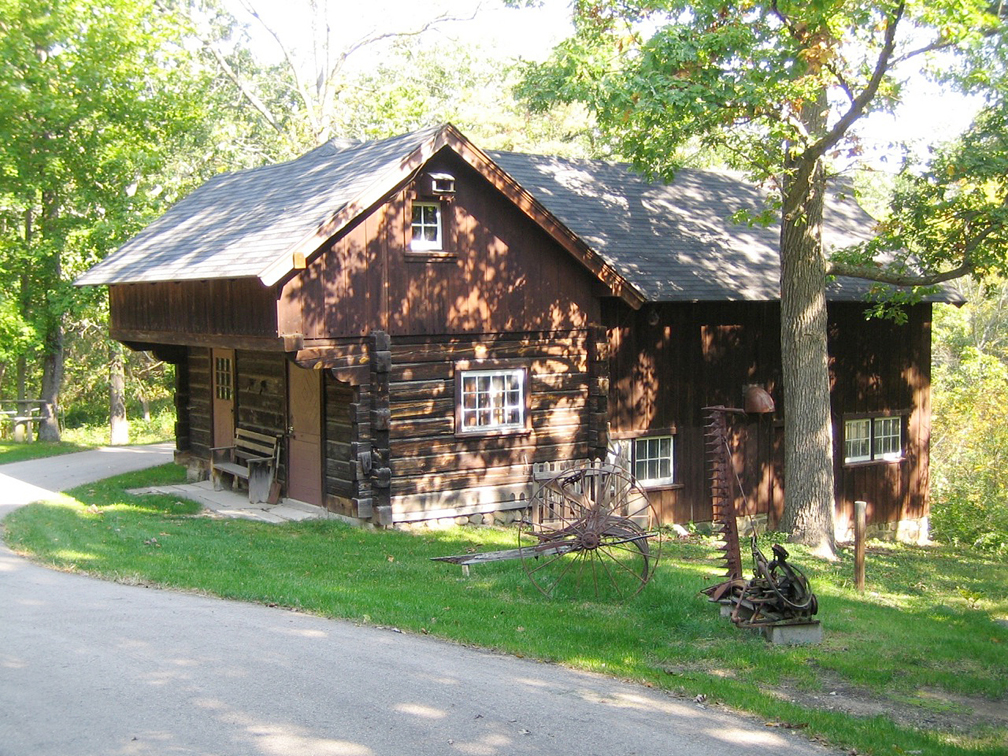 The Studio
The Studio -
-
In the early years the Lunts simply called their home The Farm. It actually was a working farm, and Alfred enthusiastically took to gardening. He remarked that he was “really a farmer who just happened to be an actor.” In the 1940s, one of their guests—they had any number of world-famous guests over the years—noticed there were ten chimneys amongst the buildings, and the new name, Ten Chimneys, was born. Today Ten Chimneys is a museum and national resource for theater, arts and arts education, and offers “the tour of a lifetime.”
-
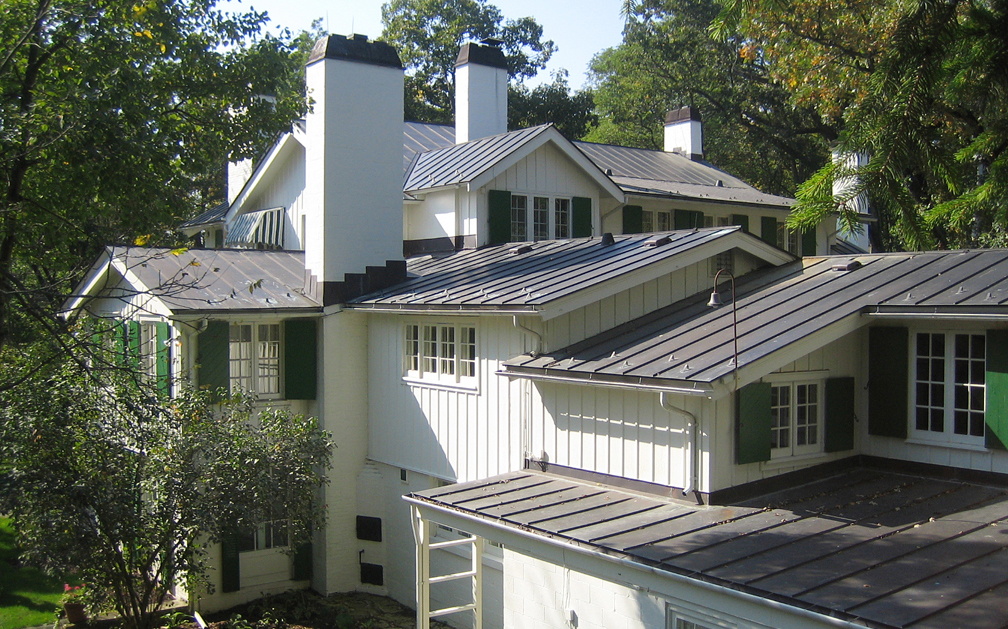 The Main House showing off some of the estate's chimneys.
The Main House showing off some of the estate's chimneys. -
The Main House
The first building, the Main House as it is called, is an expanded version of the hunting lodge. Its 8,375 square feet are filled with imaginative and creative details. The Lunts had a strongly developed sense of whimsy in their decoration. Faux marbling adorns a number of small spaces, for instance, and an old-fashioned fireplace fender (designed to keep people at a safe distance from the fire) stands in front of a non-working stove.
In 1939, the couple shopped in Stockholm and purchased two kakelugnar (tile stoves) and had them shipped home, where they still adorn the main house. The drawing room features glorious hand-painted murals, all based on Old Testament stories. Recently it was discovered by museum curator Keith MacKay that the murals were directly copied from photos of a manor house in Bråfors in central Sweden. “Bråfors is one of the few surviving historic iron makers’ villages in the Bergslagen district,” MacKay states, and Biblical scenes line the walls of the salon at Brategården, the estate’s main house.
Every aspect of the architectural design of the drawing room demonstrates the Lunts’ attention to detail, including how the walls and windows accommodate the murals. Painted by American artist Claggett Wilson, the murals feature pastel colors, using every bit of light admitted by the big windows, and reflecting light from their own surfaces. The drawing room also has a Swedish plank ceiling, with angels and cherubs painted on it in the same soft colors as the murals. Lunt was very proud of that ceiling, and had Wilson paint Bible stories with clouds on the four central panels; the clouds continue right up onto the ceiling, drawing the eye upward.
In the formal dining room, the table and chairs are Gustavian reproductions which the Lunts had shipped from Sweden. Unfinished, they were painted buff with gold accents, and the chairs were given needlepoint cushions in the signs of the zodiac.
Alfred once said he didn’t want the rooms to look as if they had been decorated, but rather to look as if they had been lived in for years. This led to using copies of antique wallpaper patterns, for example, in the master bedroom, giving a vintage feel to what was actually new space. The beautiful paneled library, part of the original hunting lodge, has a fireplace, which makes it feel cozy and lived in. -
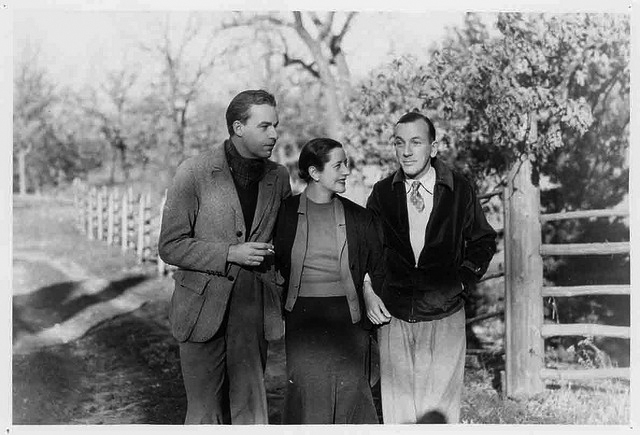 Alfred Lunt, Lynn Fontanne, and Noel Coward at Ten Chimneys. By Warren O'Brien from the O'Brien Family Collection at WHS ©Ten Chimneys Foundation
Alfred Lunt, Lynn Fontanne, and Noel Coward at Ten Chimneys. By Warren O'Brien from the O'Brien Family Collection at WHS ©Ten Chimneys Foundation -
The ‘Falu-Red’ Cottage
The second major building is the Cottage. It was originally very small, just three rooms, and the Lunts stayed there when they came to Ten Chimneys in the summers from the early 1920s to the late 1930s, while the Main House was under construction.
The Cottage, painted the typical cheerful red of many Swedish buildings, is a beautiful mid-American translation of Swedish history. The living room walls are lined with painted canvases of 18th century Swedish folk art, based on Bible stories and typical of art seen throughout central Sweden.
There are interesting pieces of furniture and collectibles here, including some rosemaling painted furniture by Wisconsin artist Per Lysny, Dala horses and pewter plates. In the kitchen, Alfred used his Swedish language skills to paint a shopping list on the kitchen door and the first verse of the 23rd Psalm on a ceiling beam. One of two Swedish clocks on the estate is in the Cottage kitchen (the other, a so-called anniversary clock, painted by Claggett Wilson, is in the Main House). It is a Mora clock decorated with Swedish folk art designs. Also in the kitchen are two American Libertyville enamel coffeepots, bearing the motto kaffetaren den basta ar av alla jordiska dricker (Coffee is the best drink in the world). Alfred proudly made old-fashioned Swedish egg coffee in them. -
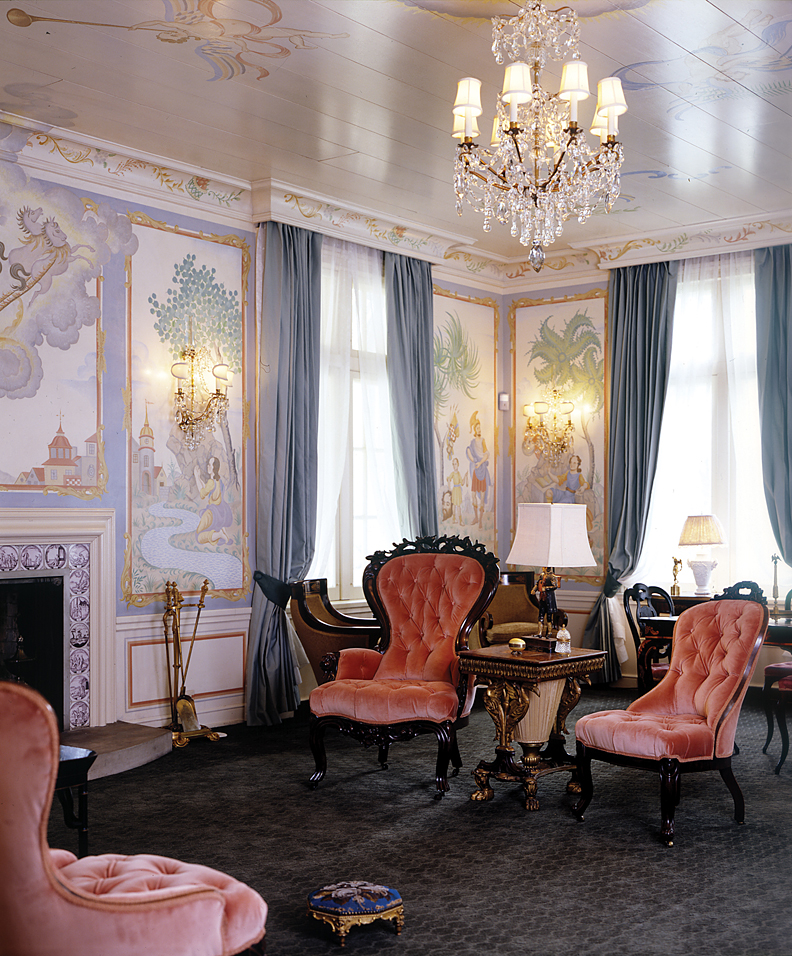 The Living room of the Main House.
The Living room of the Main House. -
The Studio
When the Lunts were furnishing their home, they traveled and shopped in Sweden as it was still possible to acquire Swedish antiques and take them out of the country. The Studio, the third major building on the estate, built in the 1930s, has several of these antiques. The building itself is a take-off on the style of an old-fashioned Swedish stuga—with a tile rather than a thatched roof—and is built of massive squared logs. Inside is a beautiful antique painted armoire and two kubbestolar, each carved from a single log and dating from the 1700s. Next to the fireplace in the Studio is an antique cradle, given new purpose as a woodbox. -
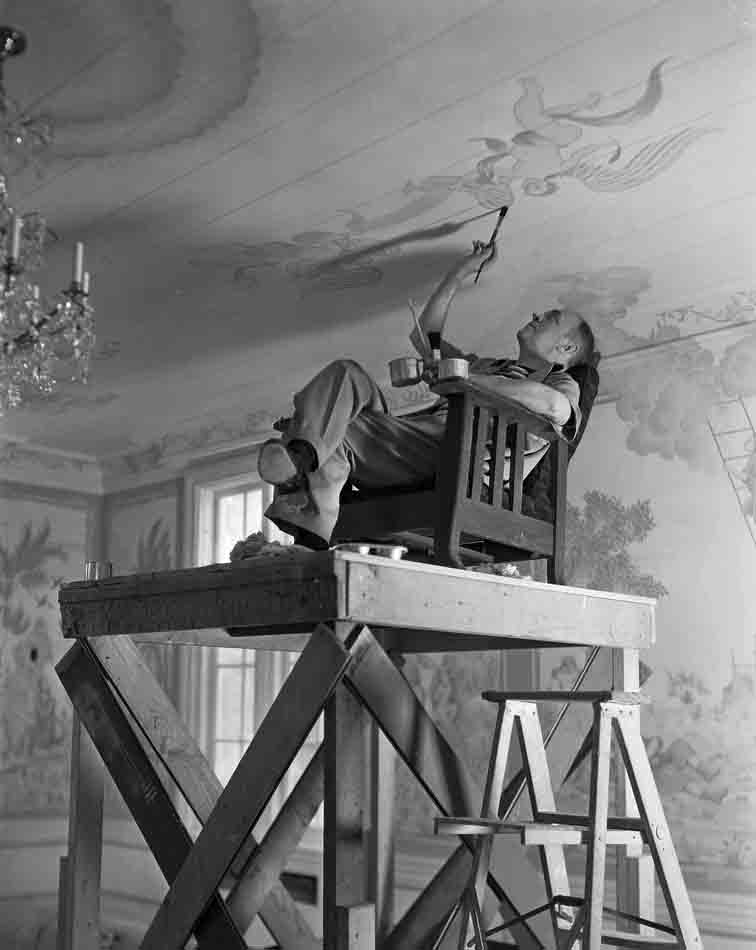 Claggett Wilson Paints the Drawing Room Ceiling at Ten Chimneys. By Warren O'Brien from the O'Brien Family Collection at WHS ©Ten Chimneys Foundation
Claggett Wilson Paints the Drawing Room Ceiling at Ten Chimneys. By Warren O'Brien from the O'Brien Family Collection at WHS ©Ten Chimneys Foundation -
Alfred wasn’t Swedish only in his décor choices. He was a talented chef, who proudly displayed a diploma from Le Cordon Bleu in Paris. His Scandinavian recipes included fiskeboller, rødgrøt, rice pudding, Swedish punch, and of course his famous cardamom bread, a best-seller at a local charity auction. Recipe: Alfred Lunt's cardamom bread
The Lunts retired to Ten Chimneys in the early 1960s and continued to live there until they died, Alfred in 1977 and Lynn in 1983. The Ten Chimneys Foundation, formed in 1996, has worked diligently to restore and preserve Ten Chimneys. Milwaukee-based preservation architects, Engberg Anderson, Inc. together with nationally renowned historian, William Seale, were engaged to oversee the extensive research and restoration of this national historic landmark estate and the design of a new program center. In 2003 it was opened to the public for tours, which are led by trained volunteer docents. From early May through early November, tour groups of ten guests each get an intimate, tantalizing look into life at Ten Chimneys. They step into a world where it feels as if the Lunts have just stepped out and will be back in a moment.
The Foundation offices are housed in the program center, which also contains interesting theater- and Lunt-related exhibits and memorabilia, an award-winning museum store and annual exhibits. It also features meeting rooms which are used in various ways, including readings of plays the Lunts starred in, author visits, and workshops for actors and artists.
The Lunt-Fontanne Fellowship is a unique theater program of intense, specialized workshops for professional actors. Each year ten prestigious American theater companies are invited to nominate one actor to attend this workshop. The first year the week-long fellowship was led by the late Lynn Redgrave (who was named after Lynn Fontanne). This year’s leader is Olympia Dukakis, and the focus will be on Chekhov.
These are examples of what Ten Chimneys has become, though they are all based on the reality created by the Lunts, whose creative energies attracted actors, writers, musicians, artists of all kinds. Ten Chimneys is good theater, but it was first and foremost a warm and inviting home to the Lunts and their friends. Visitors to Ten Chimneys are inevitably drawn into the beauty, peace and charm of the estate and fall in love with Alfred and Lynn upon the still-lingering sentiment of “welcome, dahling!” when one comes in the front door. -
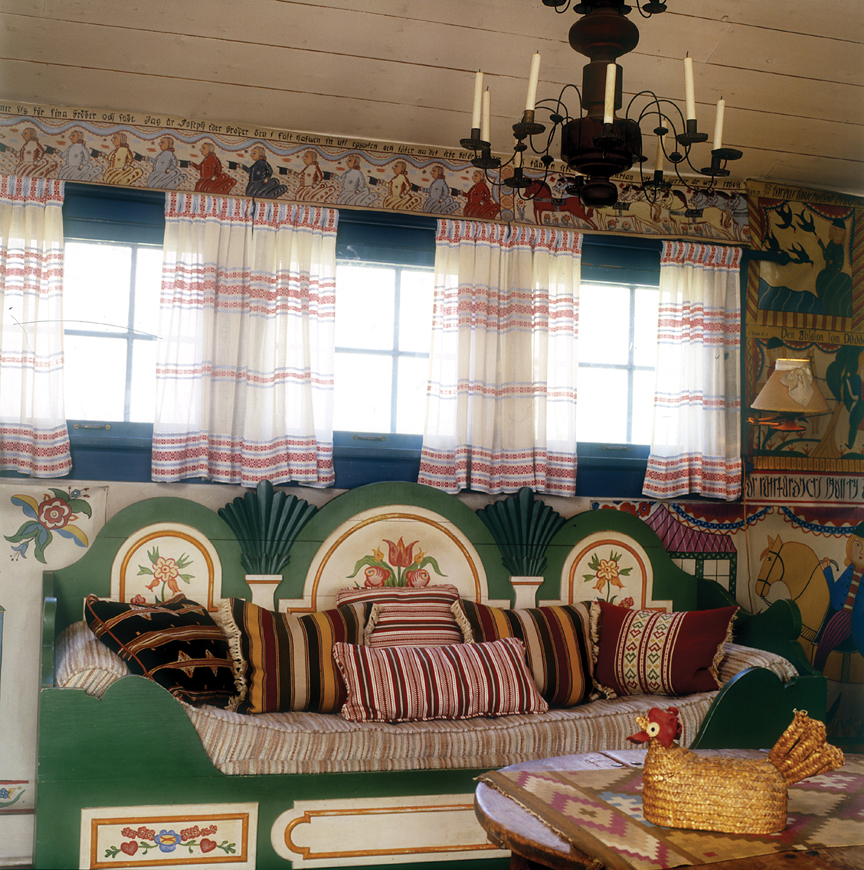 The cottage living room
The cottage living room -
By Annette Widman Olson, who lives near Milwaukee, WI but spends as much time as she can leading tours at Ten Chimneys and cooking Alfred's Swedish recipes. Her favorite room on the estate is the cottage living room, which is 100% Swedish American, just like her.
-
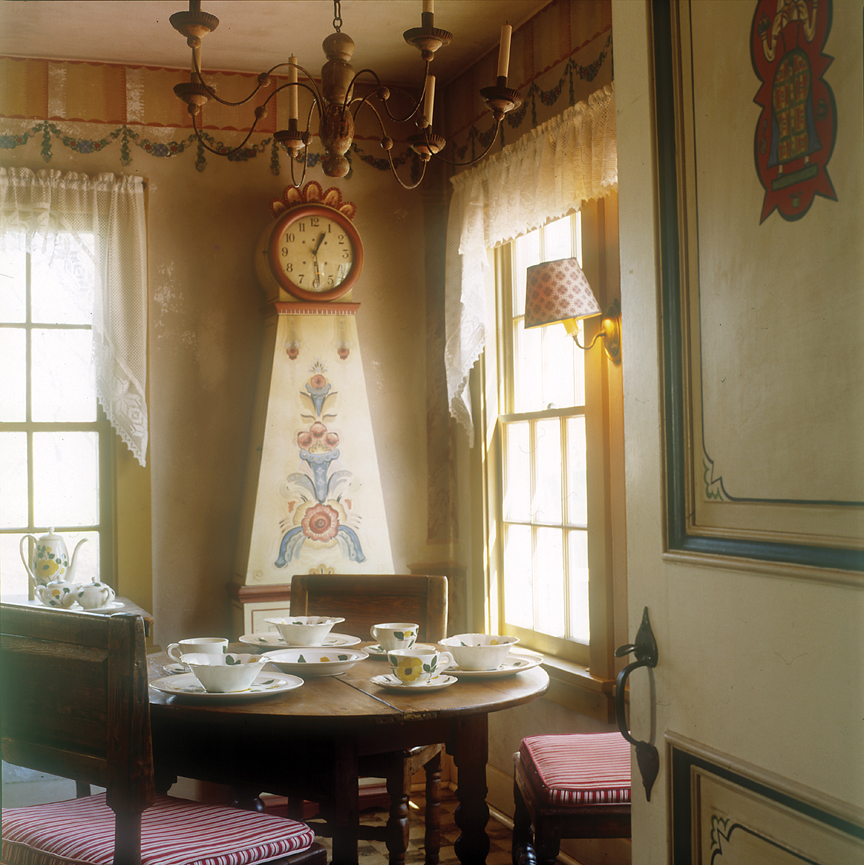 The cottage kitchen with one of the two Swedish clocks on the estate.
The cottage kitchen with one of the two Swedish clocks on the estate. -
For more info, see www.tenchimneys.org
-
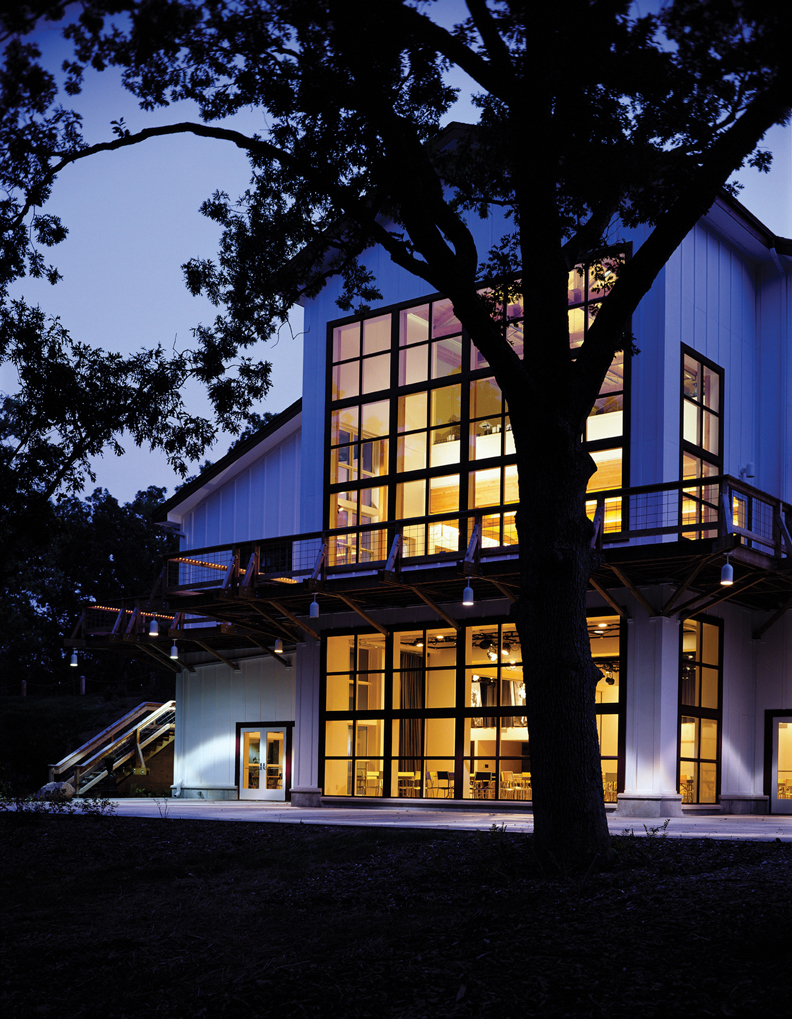 Evening image of the Lunt-Fontanne Program Center at Ten Chimneys.
Evening image of the Lunt-Fontanne Program Center at Ten Chimneys. -
The Lunts retired to Ten Chimneys in the early 1960s and continued to live there until they died, Alfred in 1977 and Lynn in 1983. The Ten Chimneys Foundation, formed in 1996, has worked diligently to restore and preserve Ten Chimneys.
Milwaukee-based preservation architects, Engberg Anderson, Inc. together with nationally renowned historian, William Seale, were engaged to oversee the extensive research and restoration of this national historic landmark estate and the design of the new Program Center. In 2003 it was opened to the public for tours, which are led by trained volunteer docents. From early May through early November, tour groups of ten guests each get an intimate, tantalizing look into life at Ten Chimneys. They step into a world where it feels as if the Lunts have just stepped out and will be back in a moment. -
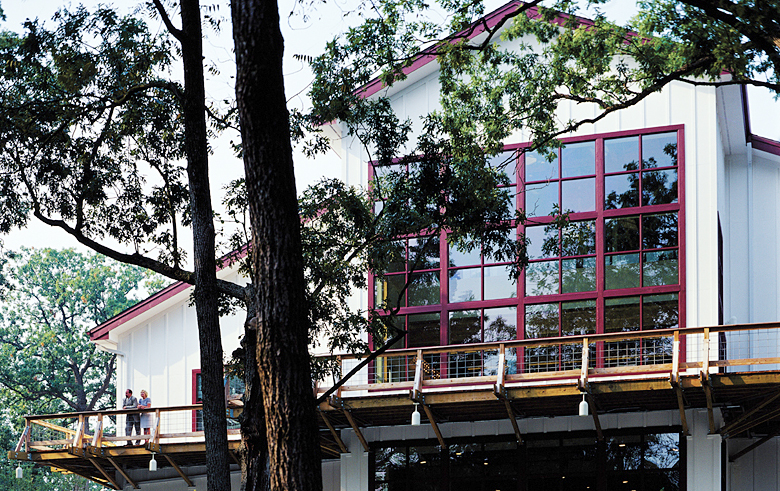
-
Photos courtesy of Ten Chimneys Foundation and Engberg Anderson, Inc.
-
-
